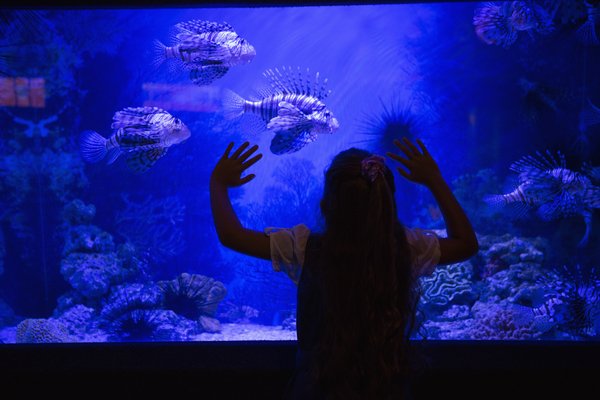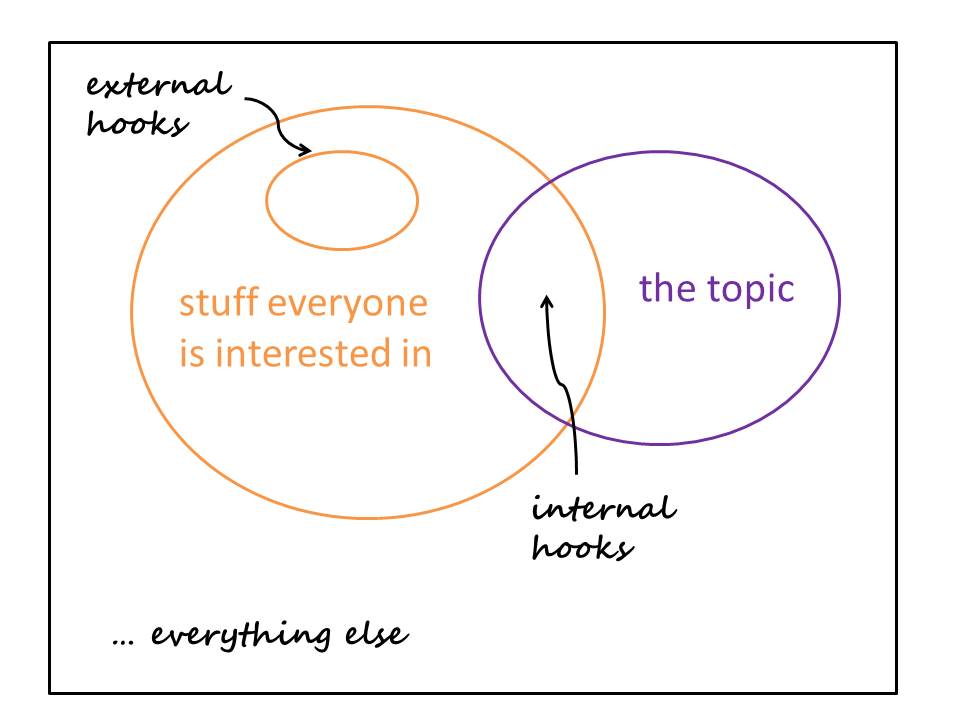Developing interest in science through emotional engagement
Paul McCrory Updated 17/6/21

It seems as if teachers are constantly being exhorted to “make science fun” nowadays. Where is the evidence that this approach can really help to improve the pupils’ understanding and knowledge? How can hard-pressed teachers, working to deliver a given curriculum, find the time to do this in practice? Is it even possible to make all topics in the science curriculum fun? In fact, isn’t there a danger that this approach will suggest to pupils that science itself cannot ever be fun unless we artificially make it so? This chapter discusses these important questions and offers a practical toolkit of some techniques that teachers can use to increase interest in their science lessons through fostering positive emotional reactions.
The neglect of the affective domain
Across the Western world there is widespread concern about the decline in interest and uptake of science both as a subject to study and a career to pursue. Research evidence suggests that, in the UK at least, many pupils start to turn away from science as young as the very end of their primary school years, and that this disaffection escalates during early secondary school (Osborne and Dillon, 2008). Crudely speaking, two of the most often-considered learning outcomes are centred on the cognitive domain (understanding, knowledge and skills) and the affective domain (feelings and attitudes). Most teachers instinctively seem to recognise the need to interest their pupils in the classroom, yet they often complain that the short-term cognitive imperative of today’s assessment-driven classrooms will always take precedence over the need for any longer-term affective outcomes.
The “education versus entertainment” debate
There is a long and controversial history to teaching approaches that exploit entertainment techniques to “make science fun” for pupils. Critics of such methods have branded them unrealistic, dishonest and ultimately unsustainable. They argue that many of the concepts and skills that children are required to master in science are in fact abstract and intellectually demanding.
In Western society, and in our classrooms, there is often a deep-seated distinction drawn between education and entertainment. Education is traditionally seen as “work” (and typically characterised as important, serious, difficult and unpleasant), and entertainment is perceived as “play” (generally associated with being vacuous, frivolous, easy and pleasurable). The different baggage of associations that we each hold around the terms education and entertainment perhaps lie at the root of many of the fierce debates in this area.
The uneasy tension between education and entertainment essentially derives from a “trade-off” model of placing these experiences at opposite ends of a continuum – the more you have of one, the less you can have of the other. The implicit - and dangerous – assumption behind this perspective, however, is that education cannot ever be enjoyable in and of itself, and that teachers continually have to “sweeten the pill” of learning by adding entertaining distractions. This model is typified by one of Mickey’s Ten Commandments that Disney’s imagineers reportedly use to guide how they integrate education into an entertainment-based medium, “For every ounce of treatment, provide a ton of fun.”
We live in a culture increasingly dominated by diverse forms of entertainment, but every variety of entertainment shares one common characteristic – at their core they are simply about creating an emotional response from humans. It is, of course, possible to design experiences for pupils that are both educational (in the sense of increasing understanding and skills) and entertaining (in the sense of being emotionally engaging). This is not to pretend that all scientific concepts and learning experiences are immediately appealing to pupils. There is an important “delayed gratification” aspect of science education which was well-captured by Claude Bernard, the 19th century scientist, when he observed that learning science was like “entering a kitchen full of awe and wonder”, but cautioned that the problem was, “the long dark hall you had to go through to get there.” Sadly many pupils never get to emerge from the gloom of the hall to experience the delights of the kitchen in their science classes. They never sustain their engagement long enough to be able to stand on their achievements and survey the breath-taking way that science can unify seemingly diverse phenomena, or appreciate the awesome power of science to help explain and predict the everyday world around them.
Some forms of entertainment can be frivolous and easy, but this is certainly not true of all entertainment. Millions of young computer gamers are willing to spend months learning the most fiendishly difficult games because they enjoy being tested by and eventually overcoming the intellectual and physical challenges which are thrown at them. The computer gaming industry has an intriguing term to describe this vital element of game play – “hard fun” arises from activities which are enjoyable largely because they are difficult. Perhaps one of the biggest misconceptions about education is that pupils want the teacher to make the subject easy for them. The art of teaching is, like a good computer game, to pitch the challenge at a level which is tantalisingly above the competence of the learner so that it appears achievable and they are motivated to master it. As their skill increases so does the difficulty of the tasks. By reading pupils closely and structuring activities carefully, teachers can use this concept of hard fun to embrace the many challenging aspects of science education and actually turn them to their advantage.

"Hard fun" drives many computer games
The importance of emotional engagement in science education
There is a vast range of positive emotions which teachers can foster through the way they teach science – for example, curiosity; anticipation; uncertainty; surprise; intellectual joy of understanding; wonder; sense of imagination; amusement; sense of beauty; and amazement. The principal justification given for the importance of these affective qualities to science education is simply that by increasing the emotional reward pupils gain from learning science, they will be more motivated to study science in school and also more likely to engage with science in their everyday lives.
Developing positive emotional responses in the classroom also helps to cultivate effective relationships between the teacher and the pupils. There are, however, several other reasons why affect is increasingly being considered a powerful ingredient in modern theories of learning, eg the value of emotional responses in their own right, and the role emotions play in attention, interest, and cognition.
The clear utilitarian benefits of science education for society and the national economy have been used to justify the privileged position of science in many curricula alongside the core skills of literacy, numeracy and information technology. The dominance of this practical justification, however, has had an unfortunate consequence; compared with the more personal arguments often made for education in the arts and humanities, science education appears to have lost its soul. The emotional responses a child can have to a beautiful work of art or a moving poem, rarely have to be defended or measured in terms of how useful they are to the child’s future career, society’s ability to make democratic decisions, or the economic well-being of the nation. Curiosity and a sense of wonderment at the way the world around us works are precious parts of being human. These powerful feelings are just as valuable outcomes of engagement with science as they are of the arts. The positive emotional reactions that children can experience from science are surely an essential part of their cultural entitlement and are important in their own right.

Curiosity and wonderment are important in their own right
Attention is a necessary, but not sufficient, condition for any learning outcome. This statement seems so obvious that it is easy to take it for granted when teaching. In fact, many psychologists argue that the most important role of attention, and perhaps one of the most significant functions of our brains, is the ability to filter out the deluge of competing sensory stimuli and memories to focus our scarce attention on the information which is really important to us at any one time. Without this one skill it would be impossible for our brains to make any sense of our conscious experiences. Neuroscience has proven that one of the main criteria that the brain uses to sift information is the emotional value it holds. So embedding emotional stimuli throughout a lesson will immediately capture and help to maintain the attention of pupils.
The fundamental question of what pupils actually find interesting about science is, surprisingly, an under-studied area. Psychologists recognise two different types of interest:
- individual interests: the narrow enduring interests which each pupil will already have developed, often from their previous experiences eg insects, cancer treatments.
- situational interests: stimuli from the content or the way that it is presented which spontaneously create short-term interest for almost all pupils eg forensic science contexts; explosive demonstrations.
Situational interests are generally more effective in the classroom because they are more likely to engage the largest number of students at once and are more under the control of the teacher than individual interests. Research has shown that one of the most effective sources of situational interest is any sort of emotional response.
We have already discussed how emotions influence the cognitive processes involved in securing attention, but affect also plays a vital role in one of the most important cognitive elements of learning – memory. For reasons of survival, our brains appear to be designed to privilege information associated with emotional arousal. Furthermore, one of the strongest messages beginning to emerge from the relatively recent application of neuroscience to educational research, is that it is no longer possible to separate cognition and affect. Even though in the past we may have tried to neatly divide these brain functions, they are, in fact, inextricably linked with one another (Damasio, 2006). So, even if a teacher is solely concerned with improving understanding or skills, rather than any motivational or attitudinal changes, it turns out that they cannot ignore the role of positive emotions in their pupils’ learning. The approach of emotional engagement, far from simply being a concession to motivation, is actually at the centre of how children attend, remember, and think.
Hunting for hooks – increasing interest in science
A study of the rather limited educational research into situational interest reveals that there is a wide range of types of stimuli or “hooks” which are universally interesting to pupils – including, novelty, incongruity, uncertainty, curiosity, humour, imagination, choice, control, empowerment, involvement, challenge, complexity, comprehension, social interaction and relevance. Most of these types of hook contain both affective and cognitive components. For example, the comprehension hook clearly involves understanding the material as well as experiencing an intellectual joy at this realisation.
The fundamental principle of the emotional engagement approach is that throughout the lesson teachers should either find or insert emotional hooks to grab and hold the attention of their pupils. When teaching any topic, the content and the situational interests of the pupils will obviously overlap to a greater or lesser extent depending on the topic in question.

Many concepts and activities in science have a high intrinsic interest for most children – they already possess numerous strong internal emotional hooks. The process of scientific thinking and investigation, for example, is full of curiosity, wonder, surprise and joy of understanding. Research suggests, however, that when teachers think about increasing student interest in a topic, they automatically tend to consider how to “make” the content more interesting by adding external hooks, rather than consider ways of finding and bringing out the inherent interest which is already within the content. To illustrate this distinction, consider the popular demonstration where vinegar is added to a zip lock bag containing baking soda and the bag is sealed. If the teacher deliberately chooses to place the primed bag nearer the pupils than strictly necessary, in order to provoke a greater sense of group involvement and jeopardy, then this would be an example of an external hook; whereas the unavoidable and suspenseful delay before the inflating bag eventually bursts is an internal hook which the teacher simply exploits.
External hooks need to be used with great deliberation so that they enhance rather than harm cognitive learning outcomes. If they are used strategically throughout the delivery of a less immediately appealing topic, these devices may increase the vigilance of pupils so that they remain attentive to capture the next rewarding emotional hook. In this way it is possible that their attention may be held long enough so that they can discover some of the deeper satisfaction possible from understanding such topics.
Here's a sample of emotional engagement techniques, involving both internal and external hooks, which teachers can use in the classroom to increase situational interest in science. Some of these techniques will be able to be used more frequently than others depending on the topic being taught and how well they suit the existing classroom persona of the teacher.
Self-disclosure of the character of the teacher
Pupils are endlessly fascinated by their teachers and by finding out more about them as human beings eg teachers revealing aspects of their personality through the persona they present in the classroom; sharing appropriate and relevant personal stories with pupils.
Modelling emotions
The positive or negative emotions of a teacher are extremely contagious to pupils. Teachers should exaggerate and vary their verbal and non-verbal expressiveness to clearly demonstrate to pupils how they feel about the topics they teach. Enthusiasm has been shown by research to be a particularly important emotion to model when teaching (Patrick et al., 2000).
Empowerment
Giving pupils a real, or apparent, sense of control of the direction of the lesson and regular opportunities to feel involved and empowered eg appearing to be “one step behind” pupils; following-up their questions and investigation ideas as much as possible; giving pupils choice about the themes to use to cover particular topics.
First form of suspense - provoking curiosity
Curiosity is perhaps the most powerful emotional engagement device available to teachers - an emotional itch that we feel compelled to scratch. It involves making pupils aware of the small, tantalising information gaps in their knowledge so that they will do almost anything to close these gaps eg posing intriguing questions; teasing pupils with “a menu” of what is to follow later in the lesson; creating “cliff-hanger” endings to a lesson.

Curiosity is that emotional itch that you just have to scratch
Second form of suspense - creating uncertainty
This is when pupils think they know what might happen next, but complications keep them hooked until the final resolution. To most people, some degree of conflict and uncertainty is appealing eg deliberately making mistakes and allowing things to “go wrong” in the lesson; facilitating group discussions and debates about controversial ethical issues and process issues in science.
Third form of suspense - building anticipation
In this form of suspense, pupils know exactly what will happen, but this event is delayed as much as possible. The greater the delay, the more unbearable the anticipation eg inserting a stall deliberately before just completing a demonstration or revealing an answer; covering a piece of equipment with a cloth until you are ready to dramatically unveil it at the end of the lesson.
Generating surprise
Novelty or surprise is a potent way of grabbing the involuntary attention of pupils. The human brain is essentially a pattern-sensing machine, and we seem to enjoy detecting patterns and then, occasionally, having our expectations confounded eg exploiting counter-intuitive demonstrations; using variety in the range of teaching methods employed.
Telling stories about scientific discoveries or applications
Stories are perhaps one of the oldest and most powerful ways of learning or passing on information through the ages. Good stories have the power to captivate even the most reluctant pupils. They are like “emotion simulators” for our minds – they allow pupils to visualise the situation they hear described and to feel emotions as if they were the characters in the story.
Humour
There are many ways to use moderate humour effectively in the classroom. The type of humour that a teacher uses will obviously depend on their personality, but most teachers will find it easier to exploit the situational humour that arises naturally through events and interactions in the classroom, rather than telling jokes as such.
Fostering wonder and imagination
These profound emotions can be quite dependent on the topic being taught, but are more likely to be induced by expressions of the teacher’s appreciation for the visual and intellectual beauty to be found in science; openly admitting that there are questions that science cannot currently answer; posing “what if” questions to provoke their imaginations; and linking science with other creative draft version for ASE guide to Primary Science Education, 2011 subjects like art, music, creative writing and drama.
Provoking short-term negative emotions
It is possible to grab the attention of pupils through the careful use of short-term, moderate negative reactions eg using the “gross factor” to provoke a disgust reaction; encouraging a slight fear about the outcome of an apparently dangerous demonstration.
In conclusion
For strong evolutionary imperatives the human brain appears to be programmed to find learning, at the appropriate level of challenge, emotionally rewarding. This chapter has attempted to explore some of the subtleties and dangers which lie behind teaching approaches which claim to “make science fun”. It suggests that the strategic use of emotional engagement hooks throughout a lesson can help to retain the attention of pupils, improve their recall, engage them cognitively and increase their interest in science.
It is perhaps reassuring to realise that psychological and neuroscience evidence is increasingly demonstrating that it is not a question of whether teachers should focus on short-term cognitive outcomes or on the generally longer-term affective impact of their teaching. Effective teaching appears to depend on simultaneously engaging both cognitive and affective processes in the brains of pupils.
References
Damasio, A. (2006) ‘Descartes’ error.’ London: Vintage Books
Osborne, J. and Dillon, J. (2008) ‘Science Education in Europe: critical reflections.’ Nuffield Foundation
Patrick, B. C., et al. (2000) ‘”What’s everybody so excited about?” The effects of teacher enthusiasm on student intrinsic motivation and vitality.’, The Journal of Experimental Education, 68(3), 217-236
Paul McCrory is an author, trainer and coach, based in the UK. He runs HOOK training, which helps informal educators to engage their learners using interactive performing skills and psychology.
Paul McCrory
HOOK training
